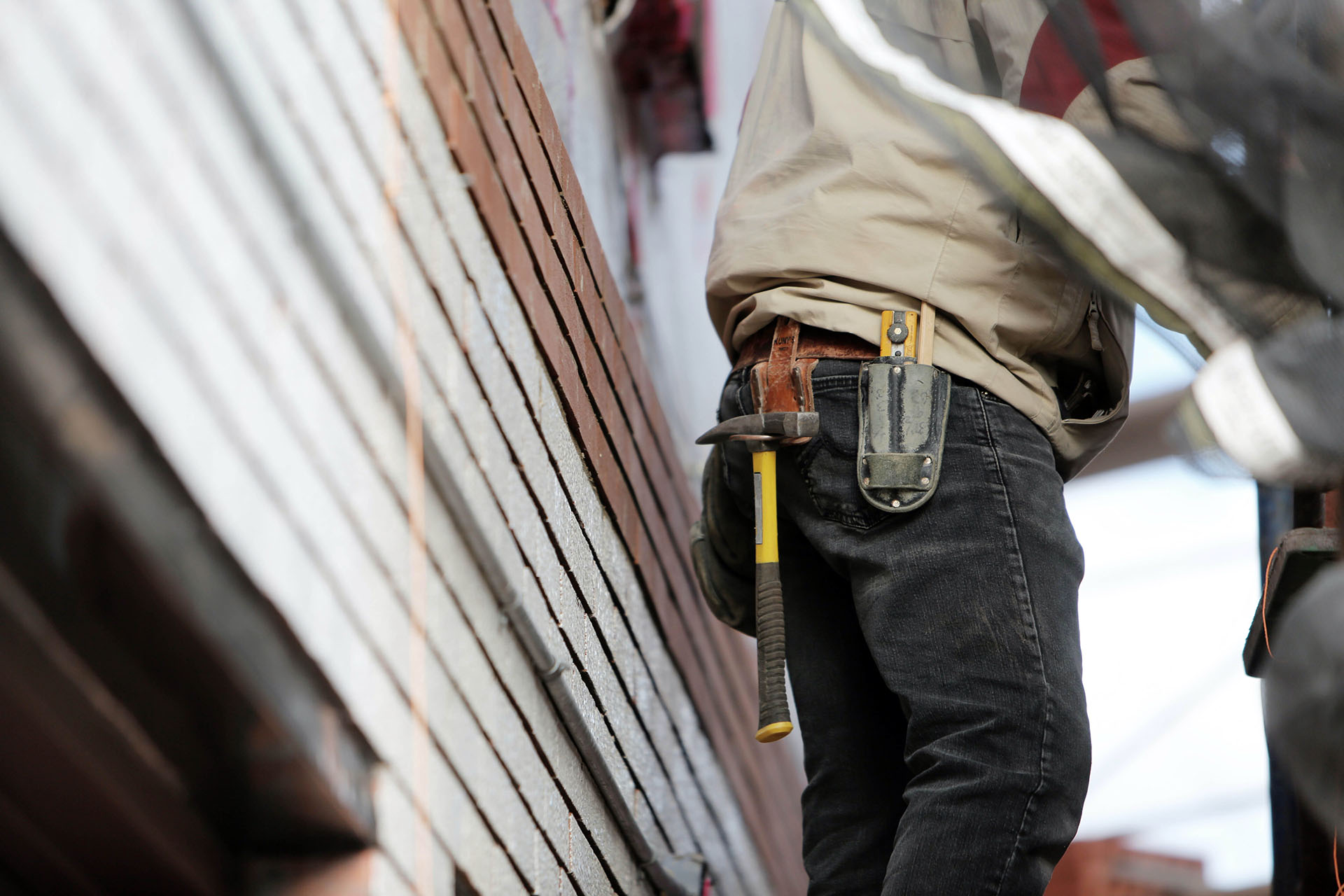You don’t have to travel far in any city to hear the noises of new construction, which include office buildings, hotels, restaurants, etc.
The employees who are raising these constructions can hear the deafening sounds of cranes, pile drivers, nail guns, and jackhammers, just as you can. Do they have hearing protection on? The answer is usually – NO, in a lot of circumstances.
Table of Contents
Construction Noise: Issues
It’s true that enforcing or regulating effective hearing conservation procedures on a building site is tough. Consider the steps involved in constructing a structure: excavation, steel fabrication, masonry, carpentry, pipefitting, electrical, HVAC, painting, welding, and roofing.
These operations are carried out by a wide range of skilled and unskilled personnel who work for big, medium, and small contractors and subcontractors. They remain on the job for a few days to a few months (or even years) and conduct a variety of duties throughout their shifts.
Because of the transitory nature of such a setting, where activities and individuals change often, operations may be noisy one day but not the next.
Over 500,000 construction workers in the United States are regularly exposed to dangerous noise. Hearing protection, on the other hand, has become the exception rather than the rule.
Neitzel and Noah Seixas, Ph.D., CIH conducted a study of construction workers in Washington and found that they were exposed to 85 dBA or greater in around 70% of their work shifts but only used hearing protection less than 20% of the time.
While this does not negate the necessity for hearing protectors, it does support the need for lower-attenuating and uniform-attenuating hearing protectors, which can assist employees to avoid overprotection and enhance overall worker safety.
Noise Management in the Construction Industry
Among the most afflicted by industrial deafness are construction workers.
Workers who are in danger include:
- Piling hammers, concrete breakers, and manual hammers are examples of impact equipment and tools.
- Those who use explosives (eg blasting, cartridge tools).
- Pneumatically powered equipment users.
- Operators of internal combustion engine-powered plants.
- Workers working near a loud facility.
- Operators and those working in confined locations with loud activities or a lot of machinery.
- Workers in the service and equipment maintenance industries.
The adoption of a preventative management program aimed at reducing worker noise exposure is critical in the construction sector. Employing labor procedures (such as silent piling systems) and using quiet construction equipment (such as hushed compressors) are the best strategies to achieve this decrease.
When quieter options aren’t accessible, a site plan should be considered to keep loud operations away from personnel who aren’t involved in their operation. Around stationary equipment such as generators and concrete pumps, portable barriers might be deployed.
Noise control factors should be considered in all four stages of any construction project, including the client’s specifications, tenderer’s proposal, site planning, and construction phase, to obtain better outcomes.
Construction Noise: Are You at Risk?
If the noise around you causes you to have to raise your voice to be heard by someone one meter away, your hearing is undoubtedly in jeopardy. Excessive loud exposure over time will result in lasting harm.
When an issue has been found but cannot be resolved quickly, a noise assessment should be performed to identify the scope and amplitude of the noise. The levels of the noise present, the things making the most noise, and the persons impacted by the noise are all detailed in an evaluation. As a result, noise reduction priorities can be established. When immediate changes are not possible to solve the noise problems, appropriate personal hearing protectors for the situation can be found.
Before you acquire or rent a plant or equipment, consider whether there is a quieter method to complete the task. Consider the many hydraulic and torque-controlled devices now available before purchasing a pneumatic impact wrench. While these units are more expensive, they last longer and produce less nut damage, as well as reduce noise and hand-arm vibration.
Changing the noise source (such as a machine) to generate less noise is the most effective and accepted technique to minimize the noise in the workplace. This might include utilizing a quieter procedure (such as pressing rather than hammering), decreasing metal-to-metal impact, treating radiating panels, or using vibration isolation mountings. It’s also crucial to maintain your vehicle on a regular basis.
Hearing Loss Workers Compensation Benefits
The Workers Compensation Program was established in 1911 to encourage employers to make the workplace safer by requiring safety programs and the use of safety devices.
Since 1911, there have been over 2.5 million workers’ compensation claims filed. Hearing loss workers’ compensation claims now rank #3 in the number of occupational diseases claims filed.
Hearing loss workers’ compensation benefits are largely undiscovered benefits covering hearing health care, which is often uninsured. Many health insurance policies and programs like Medicare do not cover hearing aid purchases but workers’ compensation can. It also pays for the disability of hearing loss just as it does for the loss of eyesight or other injuries.
Aging populations, advances in technology, and greater sensitivity to hearing loss are bringing more attention to financing hearing health care. For the most part, those who qualify for hearing loss workers’ compensation benefits are retired hearing-impaired workers who live on fixed incomes.
Always feel free to ask Johnson Law Offices about the process, the law, or an individual case. The legal, medical, and audio-metric questions that come into play in a hearing loss workers’ compensation claim can be complicated.
The claims require attention to detail mixed with an ability to work well with hearing-impaired retirees and their families, especially spouses, and their hearing health care professionals.
Sources
- https://pubmed.ncbi.nlm.nih.gov/12570087/
- https://www.commerce.wa.gov.au/sites/default/files/atoms/files/noise_newsletter_construction.pdf
Contact Us
If you, or anyone you know, worked in noise and suffers from hearing loss, please do not hesitate to contact us.
Contact Us


